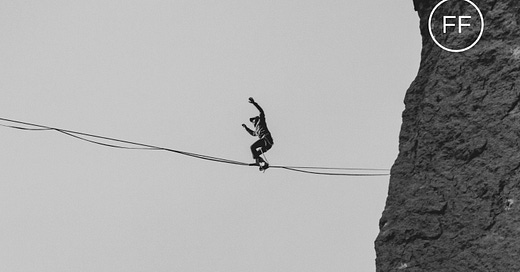The Social Media Tightrope
a.k.a. In the face of a dire humanitarian crisis, artists' already precarious existence becomes even more challenging.
For most electronic music fans, the rhythms of the average artist’s social media output have become deeply familiar:
Party flyer. Plane photo. Food pic. Video clip from the club. Post-party candid with other DJs. Release announcement. Funny TikTok. DJ meme. Radio show reminder…
During the past three and a half weeks, however, that rhythm has been disrupted, as the ongoing crisis in Gaza has prompted (some) artists to start sharing distinctly different bits of content. Scrolling through their Instagram Stories, it’s not uncommon to come across the following:
Gaza infographic. Protest flyer. Video of rubble. Video of dead children. Video of grieving parents. Multi-panel statement on the Palestinian conflict…
Although only a fraction of artists are using their platforms in this way, the cumulative shift in tone has been fairly drastic, particularly in the context of a year in which much of the electronic music world has otherwise shunned gloomy seriousness, reveling instead in bright colors, big melodies and guilt-free fun. Given that, the current juxtaposition between tales of slaughter and the usual DJ discourse is not just jarring, but surreal, especially since there’s no real separation between the two categories. The usual self-promotion hasn’t stopped, and neither has much of the carefree frivolity that can usually be found on social media. These things have simply become intertwined with charged historical / political explainers, urgent calls to action and a disturbingly endless parade of gut-wrenching imagery, to a point where it’s become commonplace for artists to post harrowing videos of Gaza, and then follow it up in the very next slide / post / story / tweet with a link to their latest single.
Watching this dynamic unfold, it’s easy to question the sincerity of the artists involved. The critiques practically write themselves:
“If they’re really so concerned about Gaza, then why are they still promoting themselves?”
“They just posted a photo of a party flyer and their Halloween costume; are they really that troubled by what’s going on?”
“This person usually posts nothing but selfies and memes, and now I’m supposed to care what they think about Israel and Palestine?”
This sort of attitude is nothing new of course. Artists, despite routinely being some of the first people to make their voices heard whenever there’s a crisis, also have a long history of having those voices dismissed, both by the powers that be and the public at large. That’s particularly true when international politics and warfare is involved, as artists—who tend to be reflexively regarded as both underinformed and inherently unserious—are essentially encouraged by the political and media establishment to quiet down and let the adults do the talking.
At the same time, the rise of social media has also birthed a different kind of pressure: that of fans, who loudly expect—and, in many cases, demand—that their favorite artists speak out. “Use your platform.” “Silence is complicity.” “You have a responsibility to say something.” These are the arguments contemporary artists are now routinely faced with whenever a crisis erupts, irrespective of their comfort level or knowledge of the corresponding subject matter. As far as the internet is concerned, it’s an artist’s duty to educate themselves and lend their voice to the cause, lest they fall on the “wrong side of history.”
Ironically though, today’s artists, even if they do decide to “do the work” and speak out, by and large only have one place to do it: social media.
Perhaps that seems fine, sensible even, but there’s just one problem: social media is also the only place they really have left to communicate everything else related to their work.



